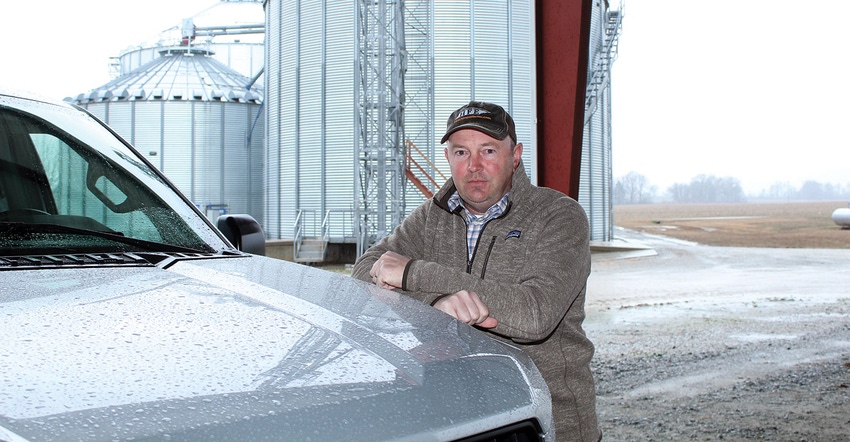
Haywood County, Tenn., farmer Hunter Hooper has again won the 2019 National Corn Grower Association (NCGA) yield contest in the "Strip, Minimum, Mulch, Ridge-till Irrigated" category. It's his fourth win in a row.
Hooper's winning entry, 327.7063 bushels per acre, came from a 20-inch row spacing block. "I went with a Dekalb hybrid: DCK70-27. That block of ground is specifically dedicated to the contest," Hooper says. "I manage it differently than I do the other corn acres across my operation. It wouldn't be profitable if I managed my entire farm like I manage that contest block."
Several years ago, Hooper began experimenting with varying levels of nitrogen, phosphorus, and potassium based on tissue and soil samples. He always keeps nutrients on the positive side. "The key to high yields is staying ahead of any nutrient deficiency — period," Hooper says. "If I get a tissue sample back with any deficient categories, it's too late and almost impossible to make up."
He pulled tissue samples once a week for up to 10 weeks during corn's key growing period in his yield contest block.
Zones and fertigation
The Brownsville, Tenn., farmer develops management zone maps based on soil electrical conductivity established with a Veris rig. The zones help him manage soil sampling locations and create variable rate seeding prescriptions. "I also use it to help guide my nitrogen applications and irrigation," Hooper says.
When weather allows after harvest, Hooper applies lime applications. He makes sure pH and other nutrients are at optimum levels before planting. "I follow corn with wheat and that lime application will help get my pH back to a target mid-6 range. The average pH level across my farm is around 6.0," Hooper says. "If I need to variable-rate nutrients in low spots, I don't hesitate."
Hooper Farms has nine pivots with fertilizer tanks positioned close to each pivot point. "Just because someone has a pivot on a farm doesn't guarantee high yields," Hooper says. "The three-year corn yield average across my farm is around 230 bushels. I'm only about 35% irrigated."
Getting fertilizer to developing corn is critical. "There are 1,500 to 2,000 gallons of fertilizer in those tanks next to my pivots," Hooper says. "When corn gets waist high, I'll set up a fertilizer pump that feeds it directly into the pivot. I'll spoon-feed it from that point throughout the season."
He usually streams 220 units of fertilizer on dryland corn with a highboy. "I'll bump it up to 320 units on my non-contest irrigated ground," Hooper says.
Soil moisture sensors will not be found on Hooper Farms. "I walk my fields each week. I know what to look for and I always refer to my latest tissue sample results," Hooper says. "I'm working from that tassel window backwards, making sure my nutrient levels stay sufficient."
Other keys
As soon as corn starts making, Hooper will walk his fields and pivot tracks, pull an ear and start counting rounds and longs. "I'll check the starch line to help me determine how long I'll need to keep irrigating," Hooper says. "I'll have seven different corn varieties this year, and each one is tailored to a specific field's soil and past productivity/yield history."
Hooper never gets in a hurry to plant and waits until the weather is right. "I like nighttime temperatures to be in the 50s, if possible, before I start planting," he says. "The majority of my contest-winning fields I planted in May. I'll evaluate temperature forecasts like a math equation."
Hooper has always enjoyed competition. "I've had a few people tell me we can't make high yields like they do up north in the Corn Belt, but I'll farm this year again with the intent of proving them wrong," he said.
About the Author(s)
You May Also Like




